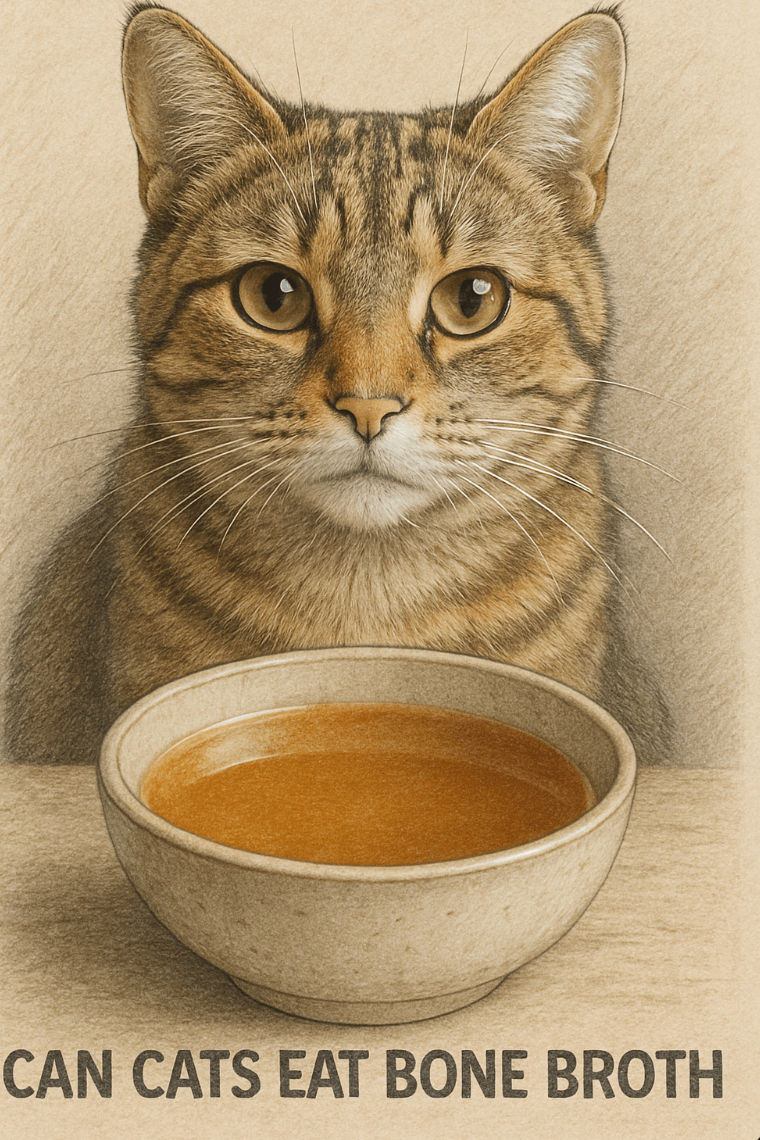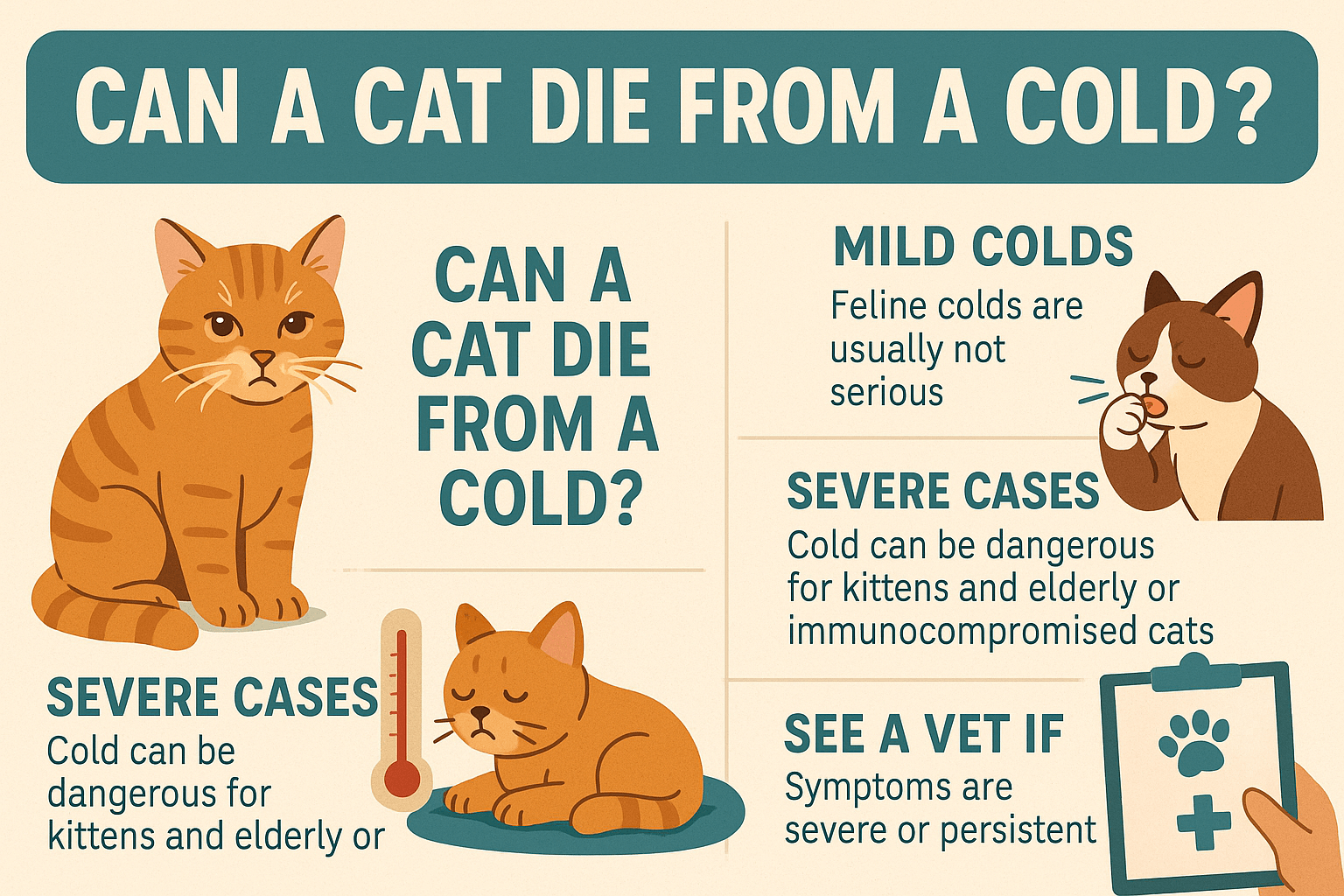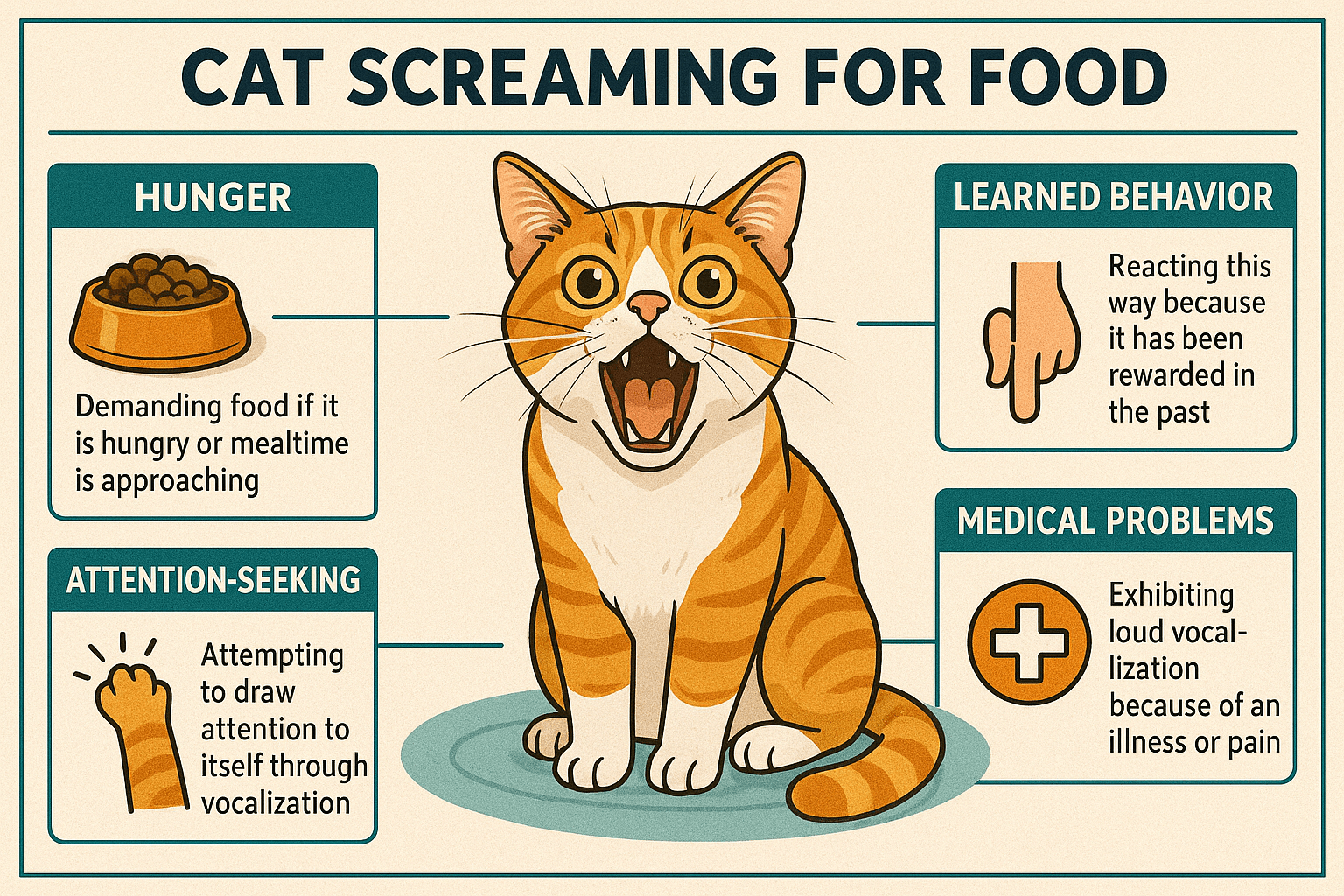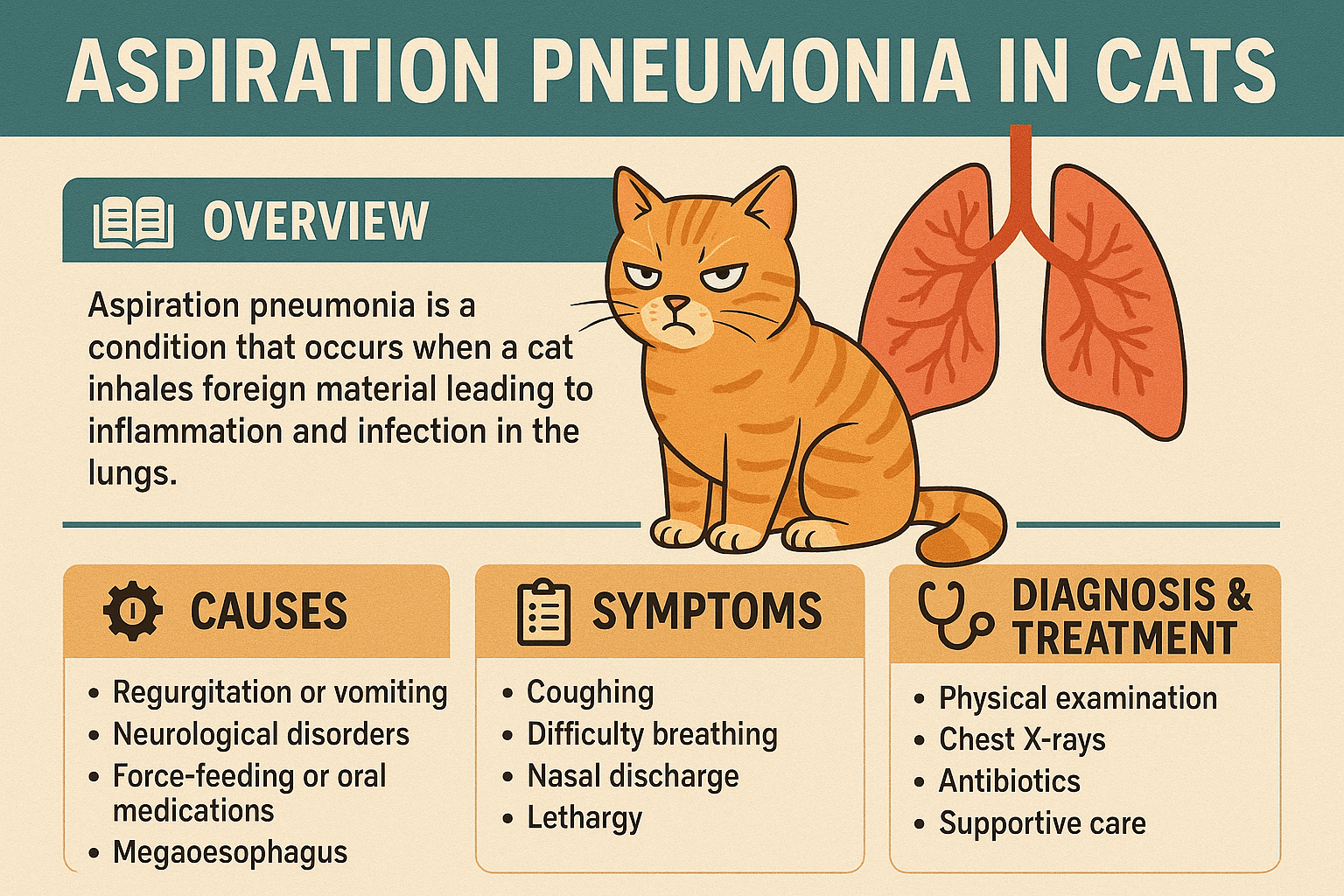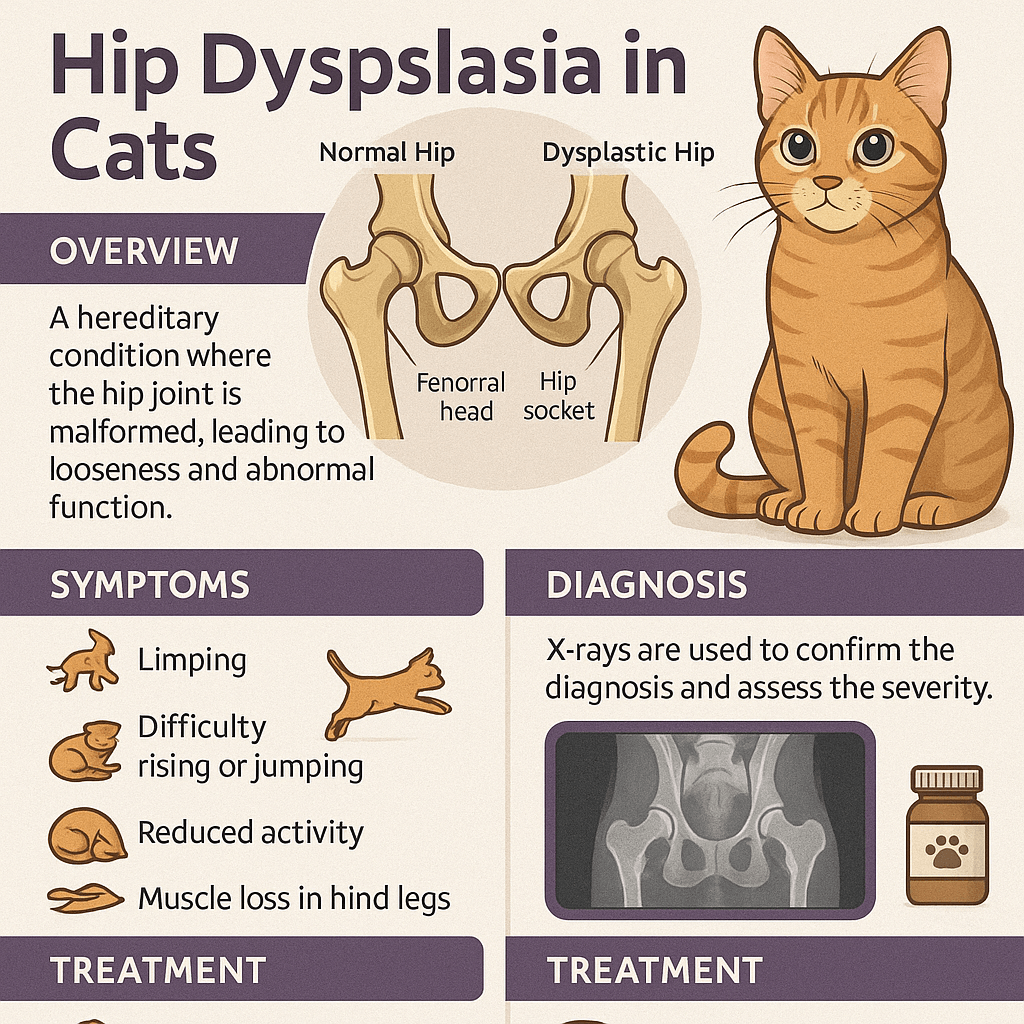Can Cats Eat Bone Broth?
Bone broth has gained popularity as a nutritious and versatile food for humans, but can it also benefit our feline friends? Cats are obligate carnivores, meaning their diet should primarily consist of animal-based proteins. Bone broth, made by simmering bones and connective tissues, is rich in nutrients like collagen, amino acids, and minerals that could support your cat’s health. However, not all bone broths are created equal, and certain precautions must be taken to ensure they’re safe for your furry companion. In this blog post, we’ll explore the benefits, risks, and guidelines for feeding bone broth to cats, helping you make an informed decision about incorporating this food into their diet.
Benefits of Bone Broth for Cats
When prepared correctly, bone broth can offer several health benefits for cats. Its nutrient-rich composition makes it a valuable addition to their diet, especially for picky eaters or cats with specific health concerns.
Hydration Support:
Many cats struggle to drink enough water, leading to dehydration. Bone broth’s liquid form encourages hydration while providing essential nutrients.Joint Health Improvement:
The collagen and glucosamine in bone broth may help support joint health, particularly in older cats or those with arthritis.Digestive Aid:
The gelatin in bone broth can soothe the digestive tract, making it beneficial for cats with sensitive stomachs or gastrointestinal issues.Nutrient Boost:
Bone broth contains vitamins and minerals like calcium, magnesium, and phosphorus, which contribute to overall health and vitality.Appetite Stimulation:
The savory flavor of bone broth can entice finicky eaters, encouraging them to consume more food during mealtime.
These benefits highlight why bone broth can be a healthy treat or supplement for cats when used appropriately.
Potential Risks of Feeding Bone Broth to Cats
While bone broth offers many advantages, it’s important to be aware of potential risks to ensure your cat’s safety.
High Sodium Content:
Store-bought bone broth often contains excessive salt, which can harm cats by causing dehydration or kidney strain.Added Ingredients:
Onions, garlic, and spices commonly found in human-grade bone broth are toxic to cats and must be avoided.Overfeeding Concerns:
Feeding too much bone broth can unbalance your cat’s diet, leading to nutritional deficiencies or excesses.Allergic Reactions:
Some cats may have sensitivities or allergies to specific ingredients in bone broth, such as certain proteins or additives.Poor-Quality Sources:
Using low-quality bones or improper preparation methods can introduce harmful bacteria or toxins into the broth.
Understanding these risks ensures you feed bone broth responsibly and prioritize your cat’s well-being.
Check this guide 👉Can Cats Eat Watermelon Seeds? Best 7 Expert Tips!
Check this guide 👉Can Cats Eat Avocado Oil? Best 7 Expert Tips!
Check this guide 👉Can Cats Eat Grapefruit? Best 7 Expert Tips!
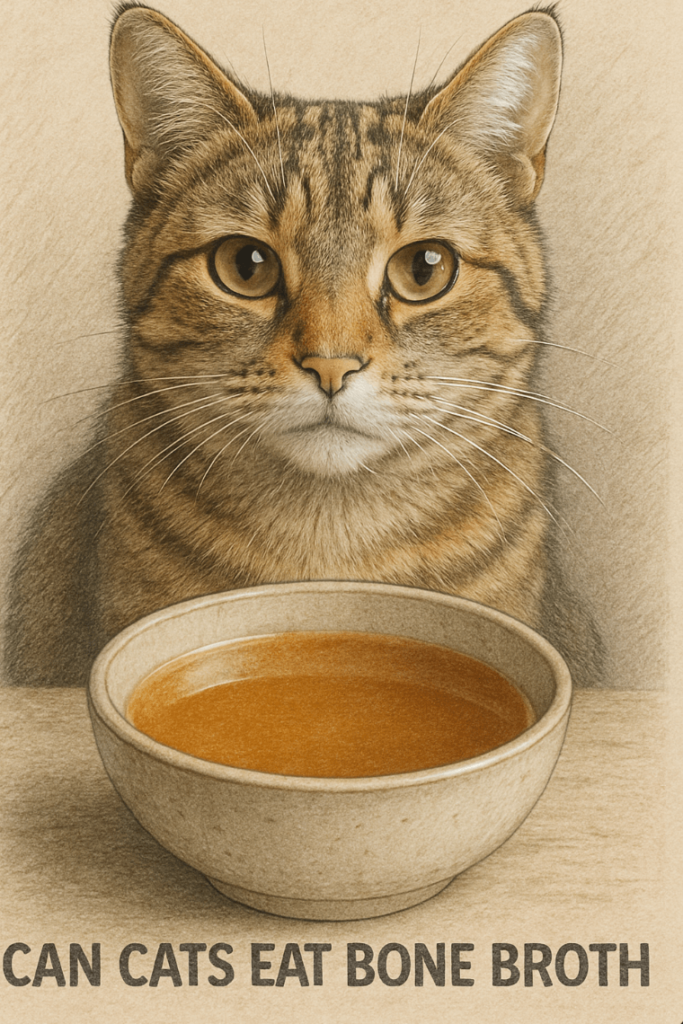
Safe Ingredients for Cat-Friendly Bone Broth | Ingredients to Avoid in Bone Broth |
|---|---|
Chicken or beef bones (raw or untreated) | Onion, garlic, or chives |
Water (filtered or distilled) | Salt, pepper, or seasoning blends |
Apple cider vinegar (to extract nutrients) | Artificial flavors or preservatives |
Optional herbs like parsley (in moderation) | Cooked bones prone to splintering |
Lean meats like turkey or lamb | Processed broths with added sugars |
How to Safely Prepare Bone Broth for Your Cat
If you decide to feed bone broth to your cat, proper preparation is key to ensuring its safety and nutritional value. Follow these steps to create a cat-friendly batch.
Use Raw Bones Only:
Start with raw, untreated bones from trusted sources to avoid harmful additives or contaminants.Avoid Seasonings:
Skip salt, spices, and herbs like garlic or onion, which are toxic to cats. Stick to plain ingredients.Add a Splash of Vinegar:
A small amount of apple cider vinegar helps extract nutrients from the bones during cooking.Simmer Slowly:
Cook the broth on low heat for 12-24 hours to maximize nutrient extraction without overcooking.Strain Thoroughly:
Remove all bone fragments and solids before serving to prevent choking or digestive blockages.
By following these guidelines, you can create a nutritious and safe bone broth tailored to your cat’s needs.
Signs Your Cat May Benefit from Bone Broth
Certain behaviors or health conditions may indicate that your cat could benefit from the nutrients in bone broth.
Decreased Appetite:
If your cat seems disinterested in food, bone broth can enhance the flavor and encourage eating.Dry Skin or Coat Issues:
Collagen in bone broth supports skin and coat health, addressing dryness or dullness.Frequent Vomiting or Diarrhea:
Cats with digestive issues may find relief from the soothing properties of gelatin in bone broth.Arthritis or Mobility Problems:
Older cats or those with joint pain may experience improved mobility due to glucosamine and chondroitin.Dehydration Symptoms:
Signs like lethargy or sunken eyes suggest dehydration, which bone broth can help alleviate.
Recognizing these signs allows you to use bone broth as a supportive dietary addition for your cat’s unique needs.
Common Mistakes to Avoid When Feeding Bone Broth to Cats
Even with good intentions, mistakes can happen when introducing bone broth to your cat’s diet. Avoid these common pitfalls to keep your pet safe.
Using Store-Bought Broth Without Checking Ingredients:
Many commercial broths contain harmful additives like garlic or excessive sodium. Always read labels carefully.Feeding Too Much at Once:
Overfeeding bone broth can upset your cat’s stomach or disrupt their balanced diet. Stick to small portions.Including Toxic Ingredients:
Never add onions, garlic, or spices, as these can cause serious health issues in cats.Skipping the Straining Process:
Small bone fragments left in the broth can pose choking hazards or cause internal injuries.Neglecting Hydration Needs:
Bone broth shouldn’t replace fresh water; ensure your cat still drinks enough to stay hydrated.
Avoiding these mistakes ensures a safer and healthier experience for your cat.
Alternative Ways to Use Bone Broth for Cats
If your cat enjoys bone broth, there are creative ways to incorporate it into their routine beyond simply serving it as a drink.
Mix with Dry Food:
Pour a small amount of bone broth over kibble to enhance flavor and encourage picky eaters.Create a Hydration Treat:
Freeze bone broth in ice cube trays to make refreshing treats during hot weather.Boost Wet Food Nutrition:
Add a spoonful of broth to canned food for extra moisture and nutrients.Encourage Medication Consumption:
Mix medications with bone broth to mask unpleasant tastes and make pill-giving easier.Offer as a Post-Illness Recovery Aid:
After illness or surgery, bone broth can help replenish lost nutrients and rehydrate your cat.
These alternatives make bone broth a versatile tool for enhancing your cat’s diet and well-being.
How to Choose the Best Bones for Making Bone Broth
Selecting the right bones is crucial for creating a safe and nutritious bone broth for your cat. Here’s what to look for when sourcing bones.
Raw, Untreated Bones:
Always choose raw bones to avoid chemicals or preservatives used in processed bones.Organic or Grass-Fed Options:
Organic or grass-fed bones reduce the risk of exposure to antibiotics or hormones.Variety of Bone Types:
Use a mix of marrow bones, knuckle bones, and chicken feet to maximize nutrient variety.Freshness Matters:
Ensure bones are fresh and sourced from reputable suppliers or local farms.Avoid Weight-Bearing Bones:
Large weight-bearing bones, like beef femurs, are harder and more likely to splinter during cooking.
Choosing the best bones ensures your bone broth is both safe and packed with beneficial nutrients for your cat.
Frequently Asked Questions About Feeding Bone Broth to Cats
How much bone broth can I give my cat?
Offer no more than 1-2 tablespoons per day, depending on your cat’s size and dietary needs.
Can kittens eat bone broth?
Yes, but ensure it’s free of seasonings and consult your vet to confirm it’s appropriate for their age.
Is store-bought bone broth safe for cats?
Most store-bought options contain harmful additives; homemade broth is safer and more customizable.
Can bone broth replace water for my cat?
No, bone broth should complement—not replace—your cat’s regular water intake.
What if my cat doesn’t like bone broth?
Try mixing it with their food or experimenting with different protein sources to find a flavor they enjoy.
Feeding Bone Broth to Your Cat: A Nutritious Treat with Careful Preparation
Bone broth can be a wonderful addition to your cat’s diet, offering hydration, joint support, and digestive benefits. However, it’s essential to prepare it safely and serve it in moderation to avoid potential risks. By understanding the dos and don’ts of feeding bone broth, you can provide your feline friend with a tasty and nutritious treat that enhances their overall well-being. Always prioritize your cat’s health by consulting your veterinarian before introducing new foods, and remember that balance is key to maintaining a happy and healthy pet.
Can a Cat Die from a Cold? Best 7 Expert Tips! Learn how to identify, treat, and prevent feline colds while understanding when to seek veterinary care for your cat’s health.
Cat Screaming for Food: Best 7 Expert Tips! Discover effective strategies to manage your cat's food-related vocalizations and create a peaceful feeding routine.
Aspiration Pneumonia in Cats: Best 7 Expert Tips! Discover causes, symptoms, and treatment advice to protect your cat’s respiratory health and ensure a speedy recovery.
Hip Dysplasia in Cats: Best 7 Expert Tips! Discover expert advice on managing hip dysplasia in cats, from symptoms and prevention to treatment options for a happier, healthier feline life.

